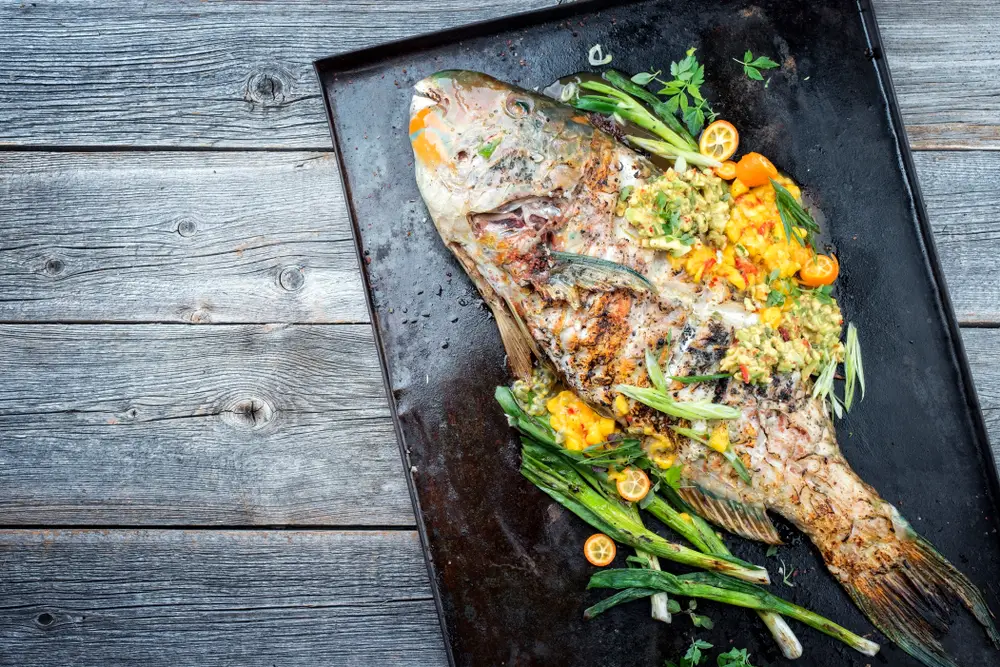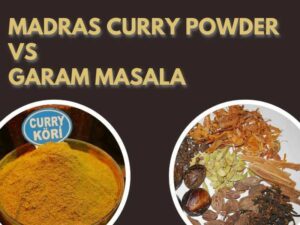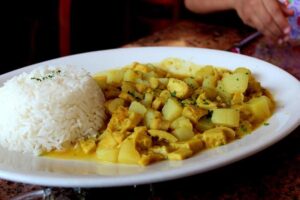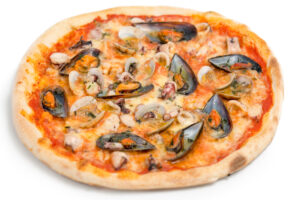It’s no surprise that Hawaii is one of the best places in the world to eat seafood dishes. Uhu is a tropical fish (a parrotfish) that lives in Hawaii’s subtropical waters, and is one of the most popular fish dishes in the country.
Whether you’ve been to Hawaii and you’re keen to replicate the iconic dish, or if you’re simply wanting a taste of a great fish dish, I’ve got you covered.
Here is the best Uhu recipe!
What is Uhu?
Uhu (pronounced “Oo-Hoo”) is the Hawaiian word for parrotfish – a subtropical fish that looks something like a cartoon.
These are colorful fish that seem to sport unique makeup designs on their faces, known for their flamboyance and noisy eating as they crunch coral underwater.
Parrotfish are given their name because of their unique beak-like mouths. In Hawaii, they feed off the algae in shallow waters.
Hawaiian locals say that uhu are the reason their beaches are so sandy – because their beak-like mouths crush the lava rock and coral between their teeth to get the algae, and then spit out the sand.
There are seven types of Uhu found in Hawaiian waters. Due to their abundance, they have become a popular fish dish in the country and across the world. Much more unique than cod, that’s for sure.
Significance of Uhu
There are around 90 species of uhu (parrotfish) across subtropical waters. Part of the Scaridae family, these fish are mostly found in Indo-Pacific waters – including Hawaii.
Interestingly, uhu are said to play a large role in bioerosion. Bioerosion is the breakdown of solid and hard ocean substrates, such as lava rock and coral to create fine, white sand found on beaches.
Uhu use their break-like mouths and sharp teeth to break off parts of these hard substrates to separate the substrate from algae, which then grinds the substrate into a sand-like consistency.
As coral reefs are under constant threat of acidic waters, temperature change, and overfishing, it is important that we don’t remove uhu from their natural habitat in large amounts.
This is where sustainable fishing comes in. Sustainable fishing is where communities continue to fish in their local waters but significantly decrease the amount of fish they take from the environment.
This is the best method of population control without limiting humans from a food source.
Grilled Uhu Recipe
As it’s not easy to find one of these unique fishes in a grocery store or fish market, you’re more likely to have to catch one in its natural habitat.
According to locals, the blue male uhu is the best fish to eat. Apparently the meat is tender and sweet, which goes beautifully with an array of sauces and dressings.
When you have your uhu, the first thing you need to do is to clean it. This isn’t an easy task for those who are new to the world of cleaning fish. It’s best to ask a professional or expert to do this for you.
One of the most popular ways of cooking and eating uhu is to grill it, so here is a recipe for grilled uhu!
Please note: This recipe makes 2-4 servings.
Ingredients:
- 1 whole uhu weighing 5 pounds (gutted, scaled, and scored either side)
- Aluminum foil
- 2 banana leaves (optional)
- Sea salt
- ½ cup sliced Portuguese sausage
- 1 cup mayonnaise
- 1 tablespoon brown mustard
- 1 teaspoon black pepper
- ¾ cup oyster or shiitake mushrooms
- 4 cloves crushed and minced garlic
- 4 tablespoons chopped ginger
- 1 bunch spring onions, sliced into 1 or 2-inch pieces
- 2 lemon or lime
- Vietnamese fish sauce
- Sliced cherry tomatoes
Step 1:
Preheat the grill. Prepare and place a large piece of aluminum foil on a table or similar flat surface.
If you’re taking the traditional Hawaiian route (which I highly recommend), place one banana leaf on the aluminum foil. Place the fish on the banana leaf. If you’re not using banana leaves, substitute this for aluminum foil.
Step 2:
Rub all sides of the fish with sea salt, and then dry it lightly with a paper towel.
Step 3:
Time to prepare the tasty mixture!
To do this, mix together the ginger, garlic, black pepper, mayonnaise, and mustard. Then, spread this mixture all over the fish. Don’t be afraid to get your hands dirty as you make sure the sauce gets into every cavity and score.
Step 4:
Take the sliced mushrooms, sausage, and most of the spring onions and mix together in a bowl. Make sure to leave at least ¼ of the spring onions for garnishing.
Stuff this mushroom, sausage, and spring onion mixture into the scores and cavity. Make sure to flip the fish over and stuff it everywhere!
Step 5:
Cover the fish with the second banana leaf (or another layer of foil), and then wrap the whole thing in another piece of aluminum foil. Tightly wrap the foil together to create a pouch so none of the juices leak out of it.
Step 6:
Place the fish on the preheated grill, and grill it for around 15-20 minutes on each side. If you want to check whether the fish is thoroughly cooked, simply peel back the foil and banana leaves to check the color. The flesh should be white instead of opaque.
Step 7:
One cooked, unwrap the foil and place the fish on a platter. Whether you keep the banana leaf on top is up to you, but I like to keep them around the fish to give the table an authentic experience.
Squeeze the lemons or limes (your choice, I personally prefer lemon) and lightly spoon some Vietnamese fish sauce over the fish. This step is optional if you want to enjoy the light and decadent flavors of the fish on its own.
Step 8:
As for garnishing, sprinkle the remaining spring onion slices over the fish along with some sliced cherry tomatoes.
Serving Uhu
You can serve uhu with whatever you like! Boiled potatoes or a big salad bowl can go wonderfully with this fish.










